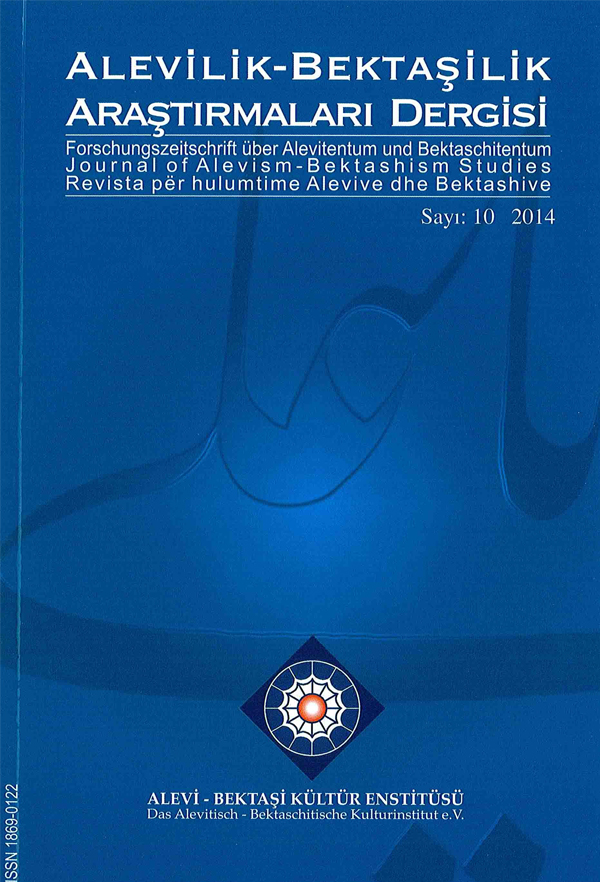The Tradition Of “Fountain In Chief” (Head Patriarchness) in Alevi Sect
DOI:
https://doi.org/10.24082/abked.2014.10.008Keywords:
Alevi sect (Alevism), The Traditioon of Imamship, he Head Patriarchness, Fountain in ChiefAbstract
A very important tradition in Alevi sect has been continuing since one thousand and two hundreds years.
This tradition is “Imamship Tradition”. Starting with Hazrat Ali, The “Imamship Tradition” was passed to his great son Hazrat Hasan after Hazrat Ali’s assasination. Following Hazrat Hasan’s assasination, The Imamship was passed on to Ali’s second great son Hazrat Hussein. By assasination of Hazrat Hussein in Karbala, The Imamship passed to Zeynel Abidin, the unique son surviving.
Among Sayyids, the “Imamship Tradition” continued on by passing from older son to older son. When Imam “walked to God” (passed away), the big son replaced the statue of father Imam. And the other sons obeyed his Imamship. This tradition was distorted once and that is why the pros of Hazrat Ali divided into two groups.
While Imam Jafar was living, his oldest son, Ismail “walked to the God” (passed away). Then, Imam Jafar made a will to his second older son Musa Kâzım to become as the Imam in Chief. But, supporters of Hazrat Ali as a big group rejected this testament by declaring: “Let’s do not distrupt the tradition, although Ismail the number one son of Imam Jafar is dead before his father, he was previously married and had a son in the name of Muhammad Matkum. Even he was still a child, he should deserve The Imamship in Chief” and recognised him accordingly. The Imamship of Ismail passed on to his son Muhammad Matkum. These people are called “With 7 Imams” or “Ismailies”. Fatimies in Egypt and Nizaries in Iran are the subgroups of these people. The Last Imam of these was Aga Han.
The great majority of Ali’s supporters (pros of Ahl al-Bayt), obeying testament of Imam Jafar, recognised Imam Musa Kazim. Alevis and Shiites come from this branch. When Sayyids who come from Hazrat Muhammad and Hazrat Ali’s lineage could not live in Arabic world, they migrated into Turkish lands. An important part of them became Turk by integrating into them.
In the meantime, the Tradition of Imamship was converted into Tradition of “Fountain in Chief” (Head Patriarchness).
The Center of “Fountain in Chief” (Head Patriarchness), which had been established in 874 in the city of Iran / Khorasan / Nishapur, was transferred to Amasya / Catkoy in Anatolia by Pir Ilyas who was the last Pir of Nishapur Dargah following Mongolian invasion in 1220. Due to execution of Pir Ilyas and his three sons during Babai Riot in 1240, The Head Patriarchness (Fountain in Chief) was passed to Haci Bektas Veli who was the second big lineage of Ibrahim Sani.
Downloads
Downloads
Published
How to Cite
Issue
Section
License
Copyright (c) 2014 Journal of Alevism-Bektashism Studies

This work is licensed under a Creative Commons Attribution-NonCommercial-NoDerivatives 4.0 International License.








